Click on images to enlarge

infestation along a creek (Photo: Sheldon Navie)
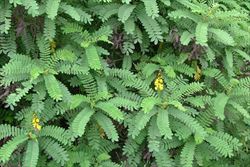
habit (Photo: Sheldon Navie)
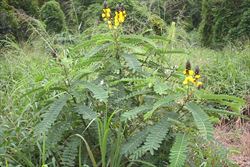
habit in flower (Photo: Sheldon Navie)
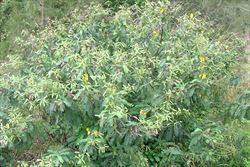
habit in fruit (Photo: Sheldon Navie)

very large once-compound leaves with numerous pairs of leaflets (Photo: Sheldon Navie)
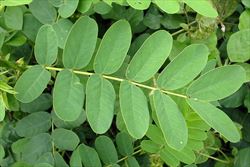
close-up of leaflets (Photo: Sheldon Navie)
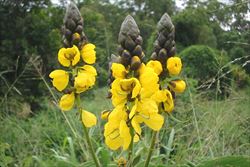
elongated flower clusters (Photo: Sheldon Navie)

close-up of flowers and blackish floral bracts (Photo: Sheldon Navie)
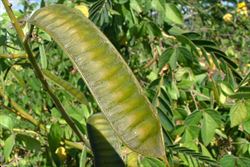
close-up of flattened immature fruit (Photo: Sheldon Navie)
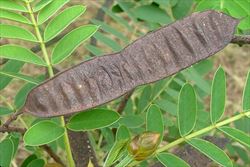
mature fruit (Photo: Sheldon Navie)

close-up of seeds (Photo: Tracey Slotta at USDA PLANTS Database)

young plants (Photo: Sheldon Navie)
Scientific Name
Senna didymobotrya (Fresen.) H.S. Irwin & Barneby
Synonyms
Cassia didymobotrya Fresen.
Family
Caesalpiniaceae (Queensland, the ACT, Victoria, Tasmania, Western Australia and the Northern Territory) Fabaceae: sub-family Caesalpinioideae (New South Wales)Leguminosae (South Australia)
Common Names
African senna, African wild sensitive plant, candelabra tree, peanut butter cassia, peanut butter tree, peanut-butter cassia, popcorn bush, popcorn cassia, popcorn senna,wild senna
Origin
Native to eastern Africa (i.e. Ethiopia, Sudan, Kenya, Tanzania, Uganda, Rwanda, Zaire, Angola, Malawi, Mozambique, Zambia and Zimbabwe).
Naturalised Distribution
Widely naturalised in eastern Australia (i.e. in south-eastern and central Queensland and in the coastal districts of northern and central New South Wales).
Also naturalised overseas in southern Africa, Mexico, southern USA (i.e. California, Arizona and Florida) and on several Pacific islands (e.g. Hawaii).
Notes
Popcorn senna (Senna didymobotrya) is occasionally cultivated as a garden ornamental in the warmer regions of Australia. It has spread from cultivation and is an emerging environmental weed in south-eastern Queensland. It is also a potential environmental weed in New South Wales and other warmer parts of Australia.
This species has become naturalised in disturbed sites and along roadsides, but is most commonly found growing along waterways (i.e. in riparian vegetation) in coastal districts. Popcorn senna (Senna didymobotrya) is currently found north from the Sydney district in New South Wales, and is relatively common in riparian vegetation in south-eastern Queensland.
Popcorn senna (Senna didymobotrya) is also a regarded as an invasive species in South Africa, where it forms dense impenetrable thickets that impede the growth and regeneration of native plants and affects the movement of wildlife. It invades grasslands, woodlands, forests, riparian habitats and coastal scrub in the eastern parts of this country. It is particularly widespread throughout the highveld region and grows in riverine bushland, in sandy riverbeds, and along the edges of damp forests in Kruguer National Park.

